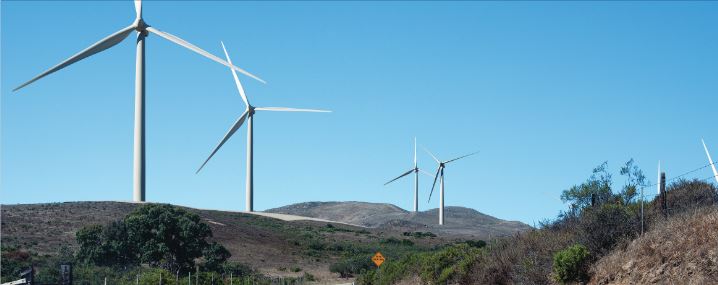Wind Is Essential to California’s Renewable Energy
But Lompoc Is Not an Appropriate Wind Site

I believe that climate change, fueled by population growth, is an existential threat to life as we know it. (https://www.independent.com/2018/12/14/too-many-people-heating-up-planet/) I always knew there would be “impossible” environmental choices along the road to greenhouse gas (GHG) reductions. The proposed Strauss Wind Energy Project (SWEP) in Lompoc is one of those “impossible” dilemmas.
The project pits 30 wind turbine generators (WTGs) up to 492 feet tall, across 2,790 acres of rural wooded land, against protection of woodlands, birds, and Native American sacred sites.
As proposed, it would kill 607 California oaks, migratory birds (from 83 species), bats, golden eagles (a protected species); and it could kill Condors (on their way back from extinction) as well as infringe on Chumash sacred sites.
It would also reduce GHG emissions and produce enough renewable energy for approximately 44,000 homes. Despite these environmental benefits, the project should not be approved. The site is not appropriate for a wind farm.
Most of the objections to the project, when compared to reducing GHG emissions and producing renewable energy, while substantial, are not disqualifying. While the county has to engage in nation-to-nation consultation with the Chumash over its sacred sites, the sites would not be destroyed. Tragic bird deaths, which cannot be avoided, can be mitigated and avoided by electronically monitored shut downs. (Unabated climate change will kill more birds then wind farms regardless.) Visual impairment at Jalama Beach is minor compared to the GHG and renewable benefits.
What disqualifies the project is that even under the Supplemental Environmental Impact Report’s (SEIR) “Environmentally Superior Alterative” (ESA), 225 trees would still be cut down causing irreparable damage to a fragile oak forest. The ESA concluded: “oak woodlands are sensitive and take decades to recover … the impacts to approximately 225 oaks under this alternative would remain significant and unavoidable.”
If California is to meet its mandated goal of 50 percent of the state’s electricity powered by renewable resources by 2025 and 60 percent by 2030, wind (now supplying 7 percent, powering 1.3 million homes) will have to be part of its portfolio. Nuclear, which before decommissioning, supplied more than two-fifths of California’s electricity, now supplies less than one-tenth, and drought severely threatens our supply of hydropower (reduced from 13.5 percent to 7 percent during the drought).
None of California’s existing wind farms (Altamont Pass, Tehachapi Pass, San Gorgonio Pass, Montezuma Hills) required the destruction of woodland ecosystems. More importantly, Kern County is reviewing a number of other proposed wind projects that would generate enough energy to supply up to two hundred thousand homes without destroying forest lands. A Stanford University study of California offshore wind potential identified a site off Cape Mendocino that could provide uninterrupted year-round energy sufficient to power approximately 177,000 homes. These projects should be developed.
It would be easy to dismiss this opposition as NIMBY (not in my backyard). And, it would be easy for Santa Barbara County to approve the Environmentally Superior Alternative, leaving the developer to decide whether the project remains profitable under that Alternative. This would be a rationale decision. However, just because a project can produce renewable energy does not make it environmentally appropriate. Destroying forests to produce renewable energy is a win-lose. Not every project with the technical capacity to provide renewable energy is environmentally appropriate.
Fighting climate change is not just about reducing CO2 emissions and increasing renewable energy. It includes: reducing petroleum use in vehicles; increasing energy efficiency savings in existing buildings, removing short term climate pollutants like Methane from the atmosphere, and ensuring that we conserve our forests (and natural lands) which remove and sequester carbon dioxide.
This project has a ways to go. Because it bleeds into the coastal zone the Coastal Commission will have to give its approval. The County Planning Commission is accepting comments until August 1st. There is still time for public input.



